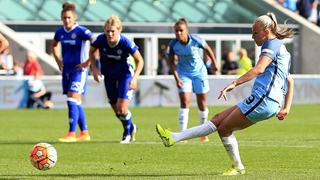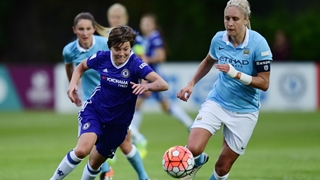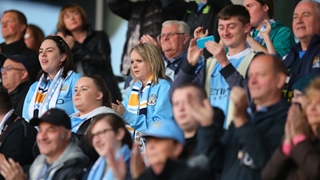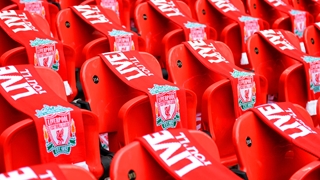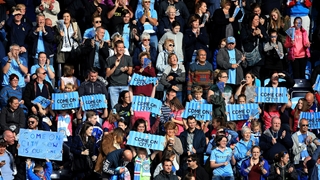
The FA Women’s Super League (FA WSL) continues to grow in popularity as attendances increased across both divisions in 2016.
In FA WSL 1, the average attendance was 1,128 – up five per cent on 2015 (1,076).
A new league record for home ground attendance was set in September when 4,096 supporters watched Manchester City secure the title against Chelsea at the Academy Stadium.
The top-division champions also recorded the highest average attendance of 2,249. Five FA WSL 1 clubs enjoyed double-digit growth across the season.
In FA WSL 2, attendances increased by 30 per cent with an average on 443, compared with 341 in 2015.
Title winners Yeovil Town secured a new division record attendance of 1,483 for their final game against Sheffield FC.
Oxford United’s crowds increased by 85 per cent, the biggest in the league, while seven clubs are in double-digit growth.
From next season The FA WSL will move to a new calendar, starting in the autumn. The league will be played alongside the traditional football calendar, from September until May each season.
To bridge the gap between the seasons, there will be a one-off competition, The FA WSL Spring Series, which will be played from February to May. Each team will play each other once as they compete for their division’s Spring Series trophy.
The competition will also provide competitive playing time for the league’s England internationals ahead of next summer’s UEFA Women’s Euros, which will be played in Netherlands.
The FA’s head of women’s football, Baroness Sue Campbell, said: "These numbers are great news for the women’s game.
"We had expected this year to provide some challenges particularly as we didn’t have a major tournament such as the World Cup taking place, which last year drove a significant increase in attendances.
"Yet these figures demonstrate just how well the women’s game is doing in this country and the interest there is in The FA WSL.
"The clubs are doing so much excellent work in building their fanbases and promoting their matches, and our broadcast partners BT Sport and BBC are really helping to showcase the league.
"We have committed to doubling attendances by 2020 and these figures are certainly a step in the right direction.
"Next year with the Euros and the league transition, we have the opportunity to build on these numbers and work with our clubs to continue to grow and develop supporter numbers even further."




